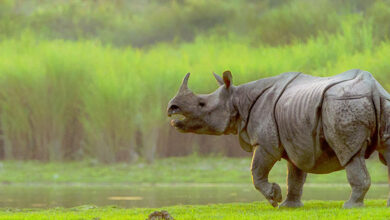
ENGLISH CHANNEL
Locust Swarms attack on India: All you need to know
With the outbreak of the Covid-19 Pandemic, many people were predicting 2020 as the possible year of doomsday. Lives in many countries were already upended because of the pandemic situation and lockdown. And now the already deteriorating situation is becoming even worse with the evasion of locusts swarm in many countries including India and Pakistan. Pakistani Government has already declared these locust swarms attack as a National Emergency.
Globally, about 30 countries are under the threat of a worse locust attack this year. Locusts can move at a speed of 16 to 19 Km per hour or 150 Km per day. They have a life-span of 3 to 5 months, and per square meter of soil, they can lay as many as 1,000 eggs. These gregarious phased locusts live in solidarity as swarms rather than in isolation, because of which their potential to harm humans becomes more threatening.
They reproduce expeditiously and multiply to the extent that a single swarm may become 20 times more of its original size. We have been hearing attacks of locust swarms in Pakistan for a few months, and now those locust swarms have entered India through favorable rain-bearing winds (strong westerly winds of Cyclone Amphan). They pose the biggest threat to human civilization as they destroy agricultural food by eating.
The swarms of Locusts from Pakistan have created havoc in many states of India, including U.P, Rajasthan, Punjab, Chhattisgarh, and Maharashtra. In across 20 districts of Rajasthan, these locusts have affected 90,000 hectares of land. The United Nations Food and Agriculture Organisation has issued a warning that locusts attack on both sides of the India-Pakistan border is likely to amplify further.
These locusts can inflict the most significant harm to agriculture in India in the coming monsoon season. The swarm attacks are likely to peak in the months of June and July as that period conditions are favorable for locusts to breed and expand their swarms. Also, newly born locusts or immature locusts are more harmful than the mature ones as they consume more food and have an obviously longer life span. An adult locust can eat about 2 grams of agricultural food every day. A 1 km long swarm can have about 40 million locusts that can consume food of 35,000 people in just a single day.
Their growing population is a matter of great concern. A swarm, the size of Paris, has the potential of consuming food that half the population of France would eat in a day. This is enough to tell how devastating these locusts can be when they reproduce fast and expand. There is a massive threat from locust swarms, which, if not acted upon, can turn into a gigantic agrarian disaster.
The current and standard method to stop them from destroying crops is to kill them by spraying pest control and plant protection chemicals. But lack of funds and inadequate monitoring is a problem in the implementation of the present standard swarm control method in India as well as in Pakistan, which is frequently pointed out by FAO (Food and Agriculture Organisation).
Also, controlling the locust epidemic during COVID Pandemic is more challenging than the normal times as the availability of pesticide and transportation facilities has got disrupted. The availability of labor is also less due to the current situation, which also has been affecting spraying operations. This sudden locust swarm attack, though, is not a new happening, there have been locust attacks previously also.
There have been about 13 locust epidemics from 1964 to 1997. As per trends, a locust swarm lasts for one to two years, and then it vanishes for the next 7 to 8 years. But with the already existing threat from COVID Pandemic on the economy, the loss during these 1 to 2 years because of the locust epidemic could be unprecedented and massively destructive.
Many financial institutions and firms, including Goldman Sachs, have forecasted that India’s GDP is likely to slump and have warned that a possible recession is waiting ahead because of the current Pandemic and the subsequent world’s most stringent lockdown that was imposed by the Government to control its spread.
Because of the current pandemic situation, many businesses have severely suffered, rendering people unemployed and low paid. Also, prices of many commodities and services have surged due to higher business operation costs, including low availability of labor and disruptive supply chain and transportation system.
Under these circumstances of higher unemployment, low-income levels, and high inflation, if locust swarms destroy India’s agrarian sector on a massive scale, then the famine-like situation may develop, and many people could die of a food emergency, mass starvation, and no income support.
So, controlling these locust swarms from destroying India’s agriculture should be acted upon as soon as possible. For this, the Government should initiate spraying of organophosphate chemicals on these massive locust swarms through drones on all the areas they have created havoc to control their population from growing deadly. If locust swarms spread is not controlled amid the current Pandemic Situation at earliest, there can be severe repercussions of it on people and the economy in the coming months or years.
राज्यों से जुड़ी हर खबर और देश-दुनिया की ताजा खबरें पढ़ने के लिए नार्थ इंडिया स्टेट्समैन से जुड़े। साथ ही लेटेस्ट हिन्दी खबर से जुड़ी जानकारी के लिये हमारा ऐप को डाउनलोड करें।




